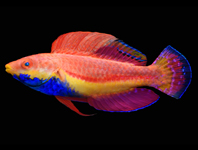Abstract
The Torrent minnows Psilorhynchus sucatio (Hamilton, 1822) and P. nudithoracicus Tilak & Husain, 1980 are widespread throughout the Ganges-Brahmaputra drainage of India, Bangladesh and Nepal (Conway et al., 2013). Like many widespread species, P. sucatio and P. nudithoracicus exhibit high levels of variation in morphological traits (particularly colour pattern) across their respective ranges and both have been described on more than one occasion by different authors examining material obtained from different parts of their range and/or unaware of earlier works. The distinctive, long-snouted torrent minnow Psilorhynchus sucatio was described by Hamilton (1822: 347) based on material from “Northern Bengal” (no types known). David (1953) introduced the name P. sucatio damodarai for a “variety” (=subspecies; ICZN, 1999; art. 45.6.4) of P. sucatio from the Damodar River (Jharkhand and West Bengal) and Tilak & Husain (1980) described the subspecies P. sucatio nudithoracicus based on material from Uttar Pradesh. In 1983, Rainboth described Psilorhynchus gracilis based on a smaller, more slender series of Psilorhynchus with a shorter snout than P. sucatio, collected in the tributaries of the Ganges and Brahmaptura rivers in northern Bangladesh. In 2013, Conway et al. argued that the names P. s. nudithoracicus and P. gracilis referred to the same species, placed the latter in the synonymy of the former, and elevated P. nudithoracicus to species status. As part of their redescription of P. sucatio and P. nudithoracicus, Conway et al. (2013) examined large series of specimens representing a range of body sizes (462 specimens of P. sucatio [13–67 mm SL] and 97 of P. nudithoracicus = [10–68 mm SL]), and encompassing almost the entire range of both species, provided multiple figures illustrating the important anatomical features of both species and, most importantly, provided clear diagnoses.
References
Ali, A., Katwate, U., Philip, S., Dhaneesh, K.V., Bijukumar, A., Raghavan, R. & Dahanukar, N. (2014) Horabagrus melanosoma: a junior synonym of Horabagrus brachysoma (Teleostei: Horabagridae). Zootaxa, 3881 (4), 373–384.
https://doi.org/10.11646/zootaxa.3881.4.5Conway, K.W. (2011) Osteology of the South Asian genus Psilorhynchus M’Clelland, 1839 (Teleostei: Ostariophysi: Psilorhynchidae) with investigation of its phylogenetic relationships within the Order Cypriniformes. Zoological Journal of the Linnean Society, 163, 50–154.
Conway, K.W., Dittmer, D.E., Jezisek, L.E., & Ng, H.H. (2013) On Psilorhynchus sucatio and P. nudithoracicus, with the description of a new species of Psilorhynchus from northeastern India (Ostariophysi: Psilorhynchidae). Zootaxa, 3686 (2), 201–243.
https://doi.org/10.11646/zootaxa.3686.2.5Conway K.W. & Mayden R.L. (2007) The gill arches of Psilorhynchus. Copeia, 2007, 267–280.
https://doi.org/10.1643/0045-8511(2007)7[267:TGAOPO]2.0.CO;2David, A. (1953) On some new records of fish from Damodar and Mahanadi River systems. Journal of the Zoological Society of India, 5, 243–254.
Hamilton, F. (1822) An Account of the Fishes Found in the River Ganges and its Branches. Archibald Constable and Co., Edinburgh, 405 pp.
https://doi.org/10.5962/bhl.title.59540Hora, S.L. (1926) Notes on the fishes of the Indian Museum. XII. The systematic position of cyprinoid genus Psilorhynchus McClelland. Records of the Indian Museum, 27, 457–460.
Hubbs, C.L. & Lagler, K.F. (1964) Fishes of the Great Lakes Region. University of Michigan Press, Ann Arbor, Michigan, 213 pp.
ICZN. (1999) International Code of Zoological Nomenclature, 4th edition. The International Trust for Zoological Nomenclature, London, xxix + 306 pp
ICZN. (2012) Amendment of Articles 8, 9, 10, 21 and 78 of the International Code of Zoological Nomenclature to expand and refine methods of publication. Zookeys, 219, 1–10.
https://doi.org/10.3897/zookeys.219.3944
Kaiser, H., Crother, B.I., Kelly, C.M., Luiselli, L., O’Shea, M.A., Ota, H., Passos, P., Schleip, W.D. & Wüster, W.O. (2013) Best practices: in the 21st century, taxonomic decisions in herpetology are acceptable only when supported by a body of evidence and published via peer-review. Herpetological Review, 44, 8–23.
Nelson, J.S., Grande, T.C. & Wilson, M.V. (2016) Fishes of the World. John Wiley & Sons, Hoboken, New Jersey, 707 pp.
https://doi.org/10.1002/9781119174844Rainboth, W.J. (1983) Psilorhynchus gracilis, a new cyprinoid fish from the Gangetic lowlands. Proceedings of the California Academy of Sciences, 43 (6), 67–76.
Raghavan, R., Dahanukar, N., Knight, J.M., Bijukumar, A., Katwate, U., Krishnakumar, K., Ali, A. & Philip, S. (2014) Predatory journals and Indian ichthyology. Current Science, 107 (5), 740–2.
Talwar, P.K. & Jhingran, A.G. (1991) Inland Fishes of India and Adjacent Countries. Vol. 1 & 2. Oxford and IBH Publishing Company, New Delhi, xvii + 1158 pp.
Tilak, R. & Husain, A. (1980) Description of a new psilorhynchid, Psilorhynchus sucatio nudithoracicus (Psilorhynchidae: Cypriniformes) from Uttar Pradesh with notes on zoogeography. Mitteilungen aus dem Zoologischen Museum in Berlin, 56, 35–40.
Zhang, Z.Q. (2012) A new era in zwoological nomenclature and taxonomy: ICZN accepts e-publication and launches ZooBank. Zootaxa, 3450, 8.

